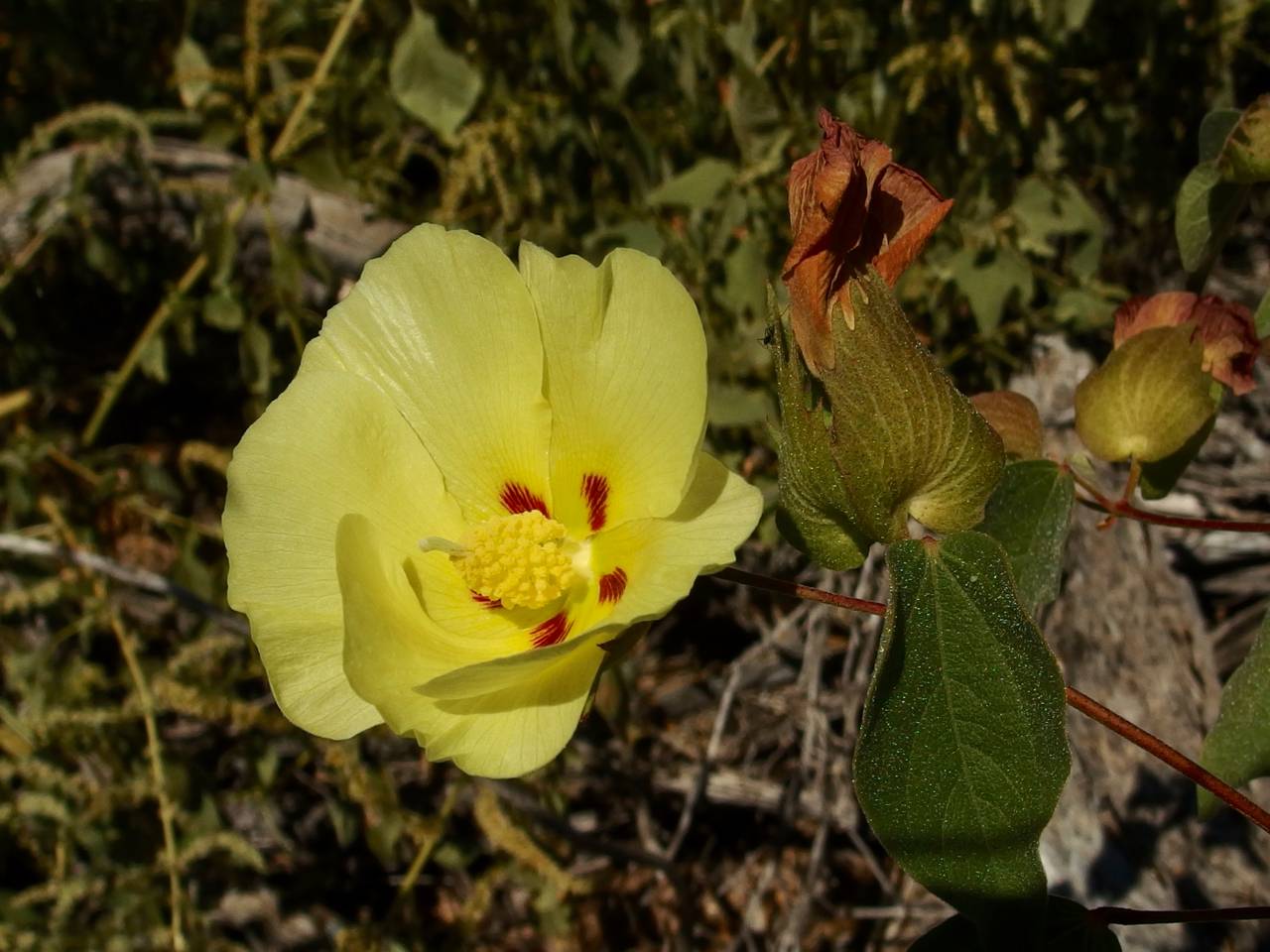Gossypium
|
Family: Malvaceae |
PLANT: Trees or (in ours) erect shrubs (rarely procumbent), stellate-pubescent or glabrate, more or less gland-dotted throughout. LEAVES: ovate and simple to (in ours) deeply palmately lobed, entire, usually with abaxial foliar nectary on main veins. FLOWERS: solitary or in sympodial inflorescences; involucel trimerous, the bracts foliaceous or reduced to straps or scales, often associated with trimerous nectaries; calyx gamosepalous and subtruncate or 5-toothed; corolla yellowish or rose, sometimes with a dark center; staminal column apically 5-dentate; style single, with 3-5 decurrent stigmatic lobes. FRUIT: capsular, usually glabrous, 3-5-loculate. SEEDS: densely lanate to subglabrous. NOTES: Fifty spp. from relatively arid tropical and subtropical parts of Africa and the Middle East, Australia, and N. and S. Amer. Several species are widely cultivated as the world's cotton crop. (Latin Gossympinus = cotton tree). Fryxell, P. A. 1979. Natural History of the Cotton Tribe. College Station: Texas A&M University Press. REFERENCES: Fryxell, Paul A. 1994. Malvaceae. J. Ariz. - Nev. Acad. Sci. Volume 27(2), 222-236. Bractlets of the epicalyx 3, large, foliaceous, cordate, ±incised; stamen-tube bearing anthers along the side but not at the summit; style undivided, with 5 subsessile stigmas; ovary 3-5-locular, ripening into a loculicidal capsule; seeds covered with long, usually white fibers. 20, warm reg. Gleason, Henry A. & Cronquist, Arthur J. 1991. Manual of vascular plants of northeastern United States and adjacent Canada. lxxv + 910 pp. ©The New York Botanical Garden. All rights reserved. Used by permission. |

